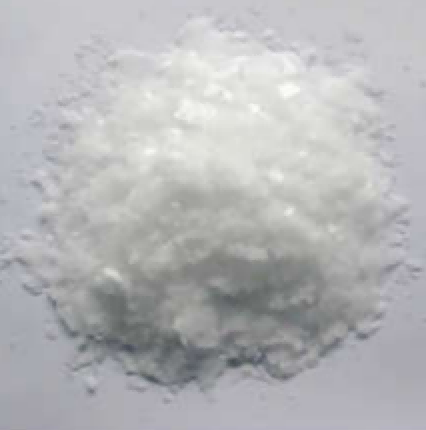1. Introduction
Just 24 hours ago, a major skincare brand announced a full reformulation of its best-selling facial cleanser to remove sodium lauryl sulfate (SLS) in response to consumer demand for gentler, eco-friendly ingredients. This move reflects a growing global trend—people are increasingly scrutinizing labels for harsh surfactants and seeking safer alternatives.

If you’ve ever experienced dryness, redness, or itching after using shampoos, toothpastes, or body washes, sodium lauryl sulfate might be the culprit. This guide walks you through how to safely replace or avoid SLS in your routine—without sacrificing cleaning power.
2. Understanding Sodium Lauryl Sulfate and Its Relatives
Sodium lauryl sulfate (also labeled as sodium dodecyl sulfate, na lauryl sulfate, or natrium lauryl sulfate) is a powerful anionic surfactant. It’s widely used because it creates rich lather and cuts through grease effectively.
However, it’s often confused with similar-sounding ingredients like sodium laureth sulfate (also called sodium lauryl ether sulfate, sodium lauryl ether sulphate, sls sodium laureth sulfate, laureth sulphate, or sulphate laureth sulfate). While both are anionic surfactants, sodium laureth sulfate is generally milder due to ethoxylation—a process that adds ethoxylated alcohol groups.
- Common SLS aliases to watch for: sls sodium, sls sulfate, lauryl sulfate, ammonium lauryl sulfate, ammonium dodecyl sulfate, ammonium lauryl sulphate
- Related lab chemicals: copper 1 bromide, cetyl trimethyl ammonium bromide (CTAB), cetyltrimethylammonium bromide
3. Why Replace Sodium Lauryl Sulfate?
Many users report skin and eye irritation from SLS, especially those with sensitive skin or conditions like eczema. Additionally, SLS isn’t biodegradable as quickly as newer bio surfactants, raising environmental concerns.

In agricultural or lawn care contexts, sodium lauryl sulfate is sometimes used as a surfactant for herbicides or a wetting agent for grass—but gentler nonionic surfactants like polysorbate 80, Span80, or lignin sulfonate are often preferred for reduced plant toxicity.
4. Step-by-Step Guide to Replacing SLS in DIY Formulations
4.1. Identify Your Product Type
Are you making shampoo, body wash, toothpaste, or a weed killer? The replacement strategy varies. For personal care, prioritize skin-compatible surfactants. For herbicides, focus on effectiveness and plant safety.
4.2. Choose a Gentler Surfactant Alternative
For shampoos and body washes, consider these SLS-free options:
- Alkyl polyglucoside (e.g., decyl glucoside, coco glucoside): non ionic surfactant, derived from coconut and sugar, very mild
- Cocamidopropyl betaine (also called coco betaine, amidopropyl betaine, or cocamido): amphoteric surfactant that boosts foam and reduces irritation
- Sodium cocoyl isethionate or sodium lauroyl methyl isethionate: creamy, low-foam cleansers ideal for bars
- Sodium coco sulfate or coco sodium sulfate: milder than SLS but still anionic
- Sodium lauroyl sarcosinate or lauroyl sarcosinate: gentle foaming agent used in toothpaste
- Bio surfactants like sodium cocoyl glutamate or sodium deoxycholate: biodegradable and skin-friendly

For herbicide mixes, try:
- Polysorbate 80 or pluronic 127 (poloxamer 188): nonionic surfactant that helps active ingredients stick to waxy leaves
- Methylated seed oil: enhances penetration without harming grass
- Lawn wetting agent based on ethoxylated alcohols
4.3. Check Compatibility
Not all surfactants mix well. Anionic and cationic surfactants (like cetyltrimethylammonium bromide) can neutralize each other. Stick to combinations like anionic + amphoteric (e.g., SLES + cocamidopropyl betaine) or nonionic + anionic.
Avoid mixing fluoro surfactant or sodium oleate unless you’re experienced—they behave very differently.
4.4. Test and Adjust
Start with small batches. A typical shampoo base might use 10–15% total surfactant: 7% sodium laureth sulfate (if tolerated) + 3% cocamidopropyl betaine + 2% decyl glucoside.
For herbicide sprays, use 1–2 teaspoons of nonionic surfactant per gallon of water—never exceed label instructions.
5. How to Spot Hidden SLS in Store-Bought Products
Manufacturers sometimes list SLS under scientific names like sodium dodecylbenzene sulfonate or dodecyl alcohol. Also watch for ‘sls sodium’ or ‘sodium lauryl sulfate for sale’ claims in ingredient databases.
Pro tip: Apps like Think Dirty or EWG’s Skin Deep can scan barcodes and flag SLS and related sulfates instantly.
6. Where to Buy Safe Alternatives
Reputable suppliers like Rohit Surfactants Private Limited offer lab-grade and cosmetic-grade alternatives including alkyl polyglucoside, sodium coco sulfate, and polysorbate 80. Always verify purity and intended use (cosmetic vs. industrial).
7. Conclusion
Replacing sodium lauryl sulfate doesn’t mean giving up performance. With the right blend of amphoteric, nonionic, or mild anionic surfactants like coco betaine or decyl glucoside, you can create effective, skin-friendly products. Whether you’re formulating shampoo or mixing a weed killer, understanding surfactant chemistry empowers you to make safer choices—without the irritation.
Our Website founded on October 17, 2012, is a high-tech enterprise committed to the research and development, production, processing, sales and technical services of ceramic relative materials such as How. Our products includes but not limited to Boron Carbide Ceramic Products, Boron Nitride Ceramic Products, Silicon Carbide Ceramic Products, Silicon Nitride Ceramic Products, Zirconium Dioxide Ceramic Products, etc. If you are interested, please feel free to contact us.


